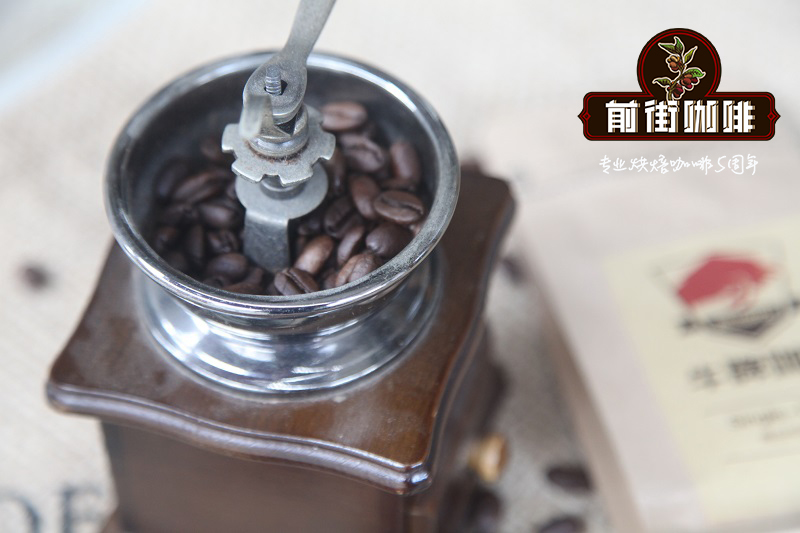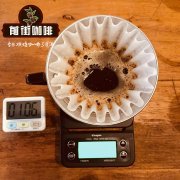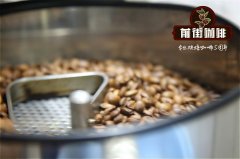The peculiarity of Sidamo Sakui Coffee introduction to the geographical location, altitude and climate of Sakui Manor

Professional coffee knowledge exchange more coffee bean information please follow the coffee workshop (Wechat official account cafe_style)
Sakuran-GUJI, HAMBELLA
This bean is the best of the Arabica boutiques and won the first place in Ethiopia's national coffee cup for producing sun beans in 2017.
The reason why Sakuran is able to reach the G1 level is that there is one more screening in the selection of beans, and the standard of each screening is also the highest. There are very few sunburn beans that can reach the G1 standard, which is a light and luxurious boutique.
Humbera is located in Guji, which belongs to the state of Oromia. to the west is the Cher of Yegashefico, separated by 3200 Michael and 30 kilometers wide mountains, while the east, south and north of Humbera are connected with Shakiso, Uraga and Kercha, which also belong to Guji. Buku Agboola is one of 20 washing factory villages in Humbela.
Bukuabra is blessed by nature, surrounded by mountains, and the hillsides are covered with native coffee trees. These coffee trees, which have gone through countless generations of natural evolution, have different forms, luxuriant branches and leaves, and lush. The planting area of Buku Agboola is as high as 2250-2350 meters above sea level, making it the highest small coffee growing area in Ethiopia, comparable to the high altitude of the large producing area of Harrar. Due to the high altitude and special microclimate environment, it gives birth to an extremely outstanding and unique flavor.
Last year, the unknown Buku Agboola won the runner-up and sunburn first in the 2015 Universe 16 Ethiopian Harvest season Cup, and this year he went even further and won the all-Ethiopian championship! In order to distinguish it from other Hambella washing plants, Beijing Hongshun Agricultural Company, which introduced the coffee, named Buku Agboola "Sakuran".
Huakui's landowner Demse, whose family has grown coffee for generations, owns a large area of coffee farms and 15 washing plants in Yegashifi and Sidamo, and has even bought coffee farms and built new washing plants in recent years. In the past, all the raw beans produced by Demse were sold to the Ethiopian Commodity Exchange Center (ECX). It was impossible to distinguish between washing plants or trace specific producing areas, and the world had no chance to get to know Buku Agboola. In 2015, Demse founded DW Coffee Export PLC. Export companies, which grew up silently and independently in the highest mountains, finally had a chance to see the light of day.
In the annual harvest season from December to January, under the requirements of Hongshun, the sugar content of red fruits picked by farmers must reach more than 30 before they can be insolated. Maintain the humidity of cherries for the first two days of the sun, so that fructose is fully fermented. High altitude reduces the temperature to 12 degrees Celsius at night to avoid the problem of excessive fermentation, sunshade in the greenhouse and bed at noon to prevent cherries from sunburn, and thick plastic sheeting at night to prevent sudden rain.
After 18 days of sun treatment, the moisture content of shell beans will be reduced to about 13%, so it will be packed in sacks and placed in a warehouse with 12-22 degrees Celsius and 45-55% humidity. After about 50 days, the moisture content of raw beans will be reduced to 11%, and finally transported to the treatment plant to remove the shell.
END
Important Notice :
前街咖啡 FrontStreet Coffee has moved to new addredd:
FrontStreet Coffee Address: 315,Donghua East Road,GuangZhou
Tel:020 38364473
- Prev

How to make a good cup of Rosa coffee? Can Rosa coffee beans be made with an Italian coffee machine?
Professional coffee knowledge exchange more coffee bean information please pay attention to the coffee workshop (Wechat official account cafe_style) exactly what is a good cup of rose summer coffee? I find that there are great differences in the definition of coffee in the cultural and historical background. The elders around me who are influenced by Japanese culture say that coffee should be mellow and mellow. If it is not bitter, it should be coffee, and a few spoonfuls of sugar should be added.
- Next

How do Ethiopian Guji Huakui coffee beans be roasted? What's special about Huakui coffee is that.
Professional coffee knowledge exchange more coffee bean information please follow the coffee workshop (Wechat official account cafe_style) Ethiopia-Gujimbera Bukubra sunburn, this string of mantra-like producing area identity card is really not so easy to remember, fortunately, DW Coffee Export PLC Export Company takes beans for the champion of the 2016 / 17 Ethiopian Coffee Harvest Cup Test Competition.
Related
- Detailed explanation of Jadeite planting Land in Panamanian Jadeite Manor introduction to the grading system of Jadeite competitive bidding, Red bid, Green bid and Rose Summer
- Story of Coffee planting in Brenka region of Costa Rica Stonehenge Manor anaerobic heavy honey treatment of flavor mouth
- What's on the barrel of Blue Mountain Coffee beans?
- Can American coffee also pull flowers? How to use hot American style to pull out a good-looking pattern?
- Can you make a cold extract with coffee beans? What is the right proportion for cold-extracted coffee formula?
- Indonesian PWN Gold Mandrine Coffee Origin Features Flavor How to Chong? Mandolin coffee is American.
- A brief introduction to the flavor characteristics of Brazilian yellow bourbon coffee beans
- What is the effect of different water quality on the flavor of cold-extracted coffee? What kind of water is best for brewing coffee?
- Why do you think of Rose Summer whenever you mention Panamanian coffee?
- Introduction to the characteristics of authentic blue mountain coffee bean producing areas? What is the CIB Coffee Authority in Jamaica?

